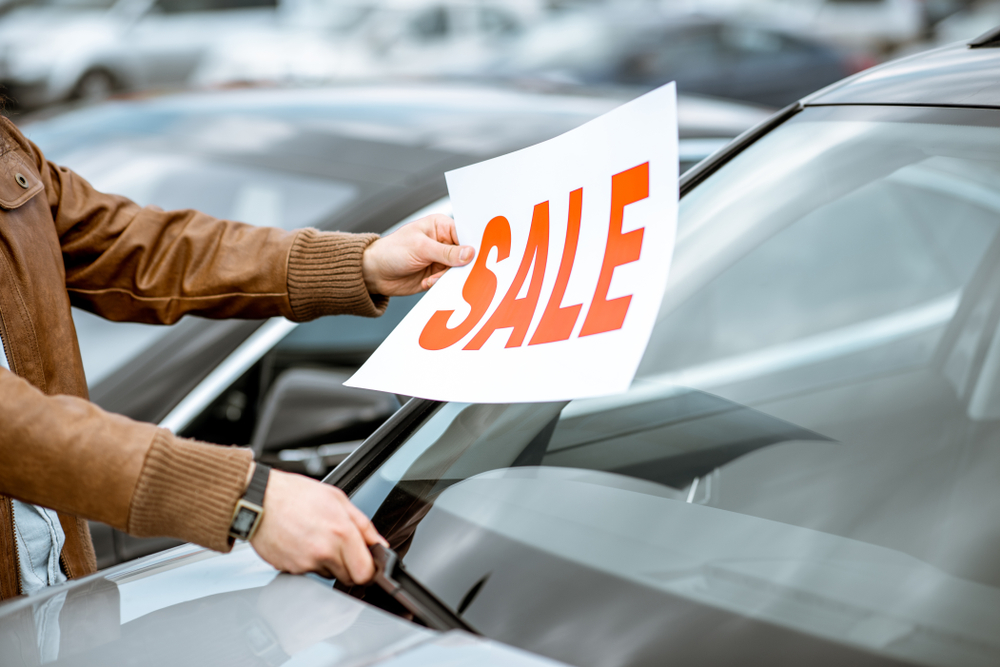Over the last 2 1/2 decades, I’ve uncovered quite a few winning investments in The Oxford Communiqué.
I’ve also done something else that I feel is equally important.
I’ve warned readers about every major financial bubble along the way. And there were quite a few.
I steered Members away from the dot-com bubble, the peak oil bubble, the housing bubble, the collateralized mortgage bubble, and – more recently – the bond market bubble, the meme stock bubble and the crypto bubble.
Today I’m going to warn you about a bubble I never thought I’d see… in used cars.
Some analysts swear that bubbles can only be recognized in hindsight. That is emphatically not so.
Take the bond market bubble, for example.
In the first 6,000 years of civilization, interest rates never got so low that they had a minus sign in front of them.
But it happened a few years ago in Europe and Japan. And it was a clear sign that the era of ground-scraping interest rates was near an end.
Understand that when someone lends money at a negative interest rate, he or she is saying, “If you’ll take this cash off my hands now, you can use it for what you want and give me back even less later.”
How much sense does that make?
Or take the crypto bubble, which has only partly deflated and still has considerably further to go.
Bitcoin is 14 years old, is still not widely accepted, and is far too volatile for buying, selling, lending, borrowing or investing.
All the things that a currency is supposed to facilitate, in other words.
It shouldn’t surprise anyone that prices are up this year. You can’t make a rational projection about when irrational behavior will end.
But end it will.
In the meantime, let’s turn to the bubble du jour: used cars.
Since the invention of the automobile, prices have only gone one way.
A new car is worth less as soon as you drive it off the lot. A used car is worth less as soon as you put some miles (and dents) on it.
At least, that’s how things worked for most of the last hundred years or so.
But the COVID shutdown put a major kink in the global supply chain – and chip-dependent new cars were among the hardest hit.
As new car inventory dried up, the market for used cars heated up.
Many dealerships began calling customers who had bought new cars a year or so earlier and delivered the good news…
“It’s worth more than you paid for it new! Would you like to trade it in?”
Last summer, I began looking with my son, David, for a decent used car to take to college.
The sticker prices were a joke. (Thirty-eight-thousand dollars for a 4-year-old Subaru with a ton of miles on it, anyone?)
A friend said, “What do you care, Alex? You’ve got plenty of money.”
I told him if someone offered me a hamburger for $150, I wouldn’t say no because I couldn’t afford it. I’d say no because that would be really dumb.
We decided he could drive his current car until market conditions got back to normal.
Sure enough, the supply chain is now mostly unsnarled and dealerships are receiving more inventory.
As a result, used car prices are… still going up?
The Manheim Used Vehicle Value Index is up 35% since September 2020.
It started falling late last year, but this year it’s rising again.
Why? Because new cars are too expensive for most folks.
According to government inflation data, prices for new models are up 21% since September 2020.
Edmunds reported last month that the average new vehicle price was $48,000.
Only 17% of new vehicles sold last month were under $30,000.
New car prices are so high that leasing is no longer in favor.
Finance companies don’t want to get stuck overestimating residual values if used car prices crash.
That “if” is really “when.”
As new car inventory piles up – and consumers take a gander at the exciting new interest rates the Fed has delivered – prices for those vehicles will start coming down.
In short, buy into the current used car bubble and you’re likely to take a beating when you turn around and sell in a few years.
There are three solutions to this problem.
You can stick with the car you’ve got (for now). You can use public transportation. Or you can call Lyft or Uber.
Or… you can take the plunge and buy a used car today at prevailing prices.
Consumers have virtually always lost money on their cars anyway.
But when the used car market returns to earth, those losses are going to be fast and extraordinary.
In short, it’s a great time to sell a used car. And a terrible time to buy one.
If you can’t avoid it, at least go in with your eyes wide open.
Cars have always been a depreciating asset. But that will be especially true over the next year or two.
